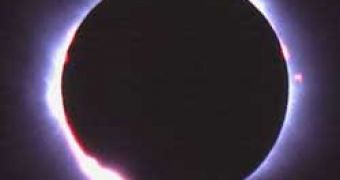The first solar eclipse of the new year will take place on Thursday 7 February, will be a partial eclipse and unfortunately can only be seen by part of the residents of the southern hemisphere. Scientists predict that the shadow cast by the Moon will appear over the Antarctic continent and travel towards Australia and New Zealand before the eclipse ends, thus tourists visiting the respective countries should get a pretty good view.
Don't worry too much about the fact that you won't be able to see it, partial eclipses are not so spectacular in the first place. On the day of 7 February, the Moon will be in the new moon phase and will pass in front of the Sun as we see it from Earth. Nevertheless, the Earth's position on the orbit is closer to the Sun, meaning that the apparent size of our natural satellite will be smaller than that of the Sun.
This is what astronomers call an 'annular' eclipse, due to the fact that the Moon passes in front of the Sun but it is not capable of covering it completely. The name 'annular' eclipse comes from the 'annulus', which represent the region of the Sun not covered by the Moon during a partial eclipse, when the Moon is right in the center of the solar disk.
Although the partial eclipse will be detectable in Australia and New Zealand on that day, people will no be able to view the annulus eclipse, since it will only appear in the Antarctic regions of the globe. The annulus phase of the eclipse can be seen between the hours 3:19 to 4:40 a.m. GMT, while the whole eclipse will take place between 1:38 and 6:11 a.m. GMT.
During this time, the lunar disk will cover up to 47 percent of the Sun's apparent size. Be careful though, viewing the solar disk directly with the naked eye or without a protective kit is highly forbidden and can even result in blindness. Always use special protective eclipse glasses!

 14 DAY TRIAL //
14 DAY TRIAL //